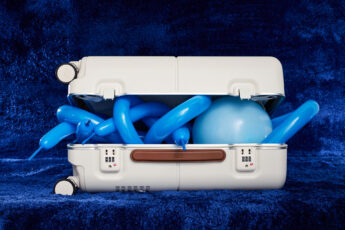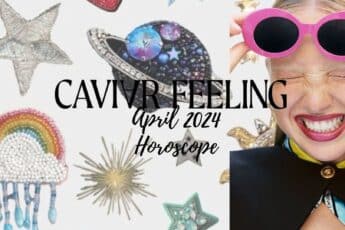Skin cancer is one of Australia’s most common cancers and it’s a bigger issue than many of us realise. According to the Cancer Council of Australia, 2 in 3 Australians will be diagnosed with some form of skin cancer by the age of 70. If Australians took simple measures to protect their skin, the number of skin cancer cases in Australia would be significantly reduced. Dr. Priya Chagan – TAL General Manager Health Services and Chief Medical Officer has given us his tips to bear in mind this summer regarding skin health.
You might also like this:
Using Sunscreen For Face And Not Getting Breakouts Is Possible Now
Ask The Expert: How To Manage Stress During Uncertain Times
The Hangover Cure for the Skin After Drinking Days
The good news is that skin cancer is also one of the most easily detectable with the right skin cancer check, and when detected and treated early it is highly curable. The sooner skin cancer symptoms are identified and treated, the better. New research from leading Australian life insurer, TAL, has revealed that a staggering 8 in 10 Australians said they would be more inclined to regularly self-check their skin if they were properly taught how to. Despite 92% of Australians admitting that self-checking their skin is important to them, only 39% say they know how to properly self-check their own skin for signs of skin cancer. what does skin cancer look like
You are best placed to notice any changes in your own skin The TAL SpotChecker Australian Skin Safety Report also revealed that 1 in 4 Australians never examine their own skin for signs of skin cancer. This is particularly concerning in a country like Australia where Aussies love being outdoors and embracing the summer sun. Taking the time to get to know your own skin is a vital step towards detecting and preventing skin cancer.
Get familiar with how your skin looks so you can look out for any sore, changing, abnormal, or new spots, as these are usually the first signs of skin cancer. We should all be self-checking our skin to identify any changes that suggest a skin cancer. If you see anything unusual, you should consult a health professional right away. Self-checking should be part of your health routine. Not all skin cancers look the same. They all appear differently depending on your skin type and there’s no “one” thing to look out for. Becoming familiar with your skin will help you notice changes
as they happen.
A thorough self-examination of your skin should be a regular occurrence in your routine. This is best done in a well-lit room in front of a full-length mirror so you can check your whole body, including
the areas that are not directly exposed to the sun.
Using a handheld mirror can be a helpful way to look at the areas of your body that are hard to see. A family member, partner, or friend may be able to help you with these checks, especially for any areas of your skin that are difficult to see. To check your scalp, it can be useful to use a blow dryer
to expose each section. Keep track of any spots, blemishes, freckles, and moles because while they may be harmless, if you notice them changing, you need to seek professional advice.
The SCAN Method: When self-checking your skin to prevent skin cancer
The Skin Cancer College of Australasia recommends that once a month you use the “SCAN” method to look for spots or moles on your body that are:
- SORE: A spot that is sore (scaly, itchy, bleeding, or tender) and doesn’t heal within 6 weeks.
- CHANGING: A spot that’s changed in appearance (size, shape, colour, or texture)
- ABNORMAL: A spot that looks different, feels different, or stands out when compared to other spots and moles.
- NEW: Any new spots that have recently appeared.
For more information and resources on how to self-check and what to look for, or for help booking a skin check at your local GP, visit www.tal.com.au/tal-spotchecker
*The survey was conducted by PureProfile on behalf of TAL, in October 2020, with a nationally representative sample of 1,001 respondents in Australia aged 18-65+ years old.
You might also like this:
Here are The Non Essentials Ingredients you Should be Avoiding in your Skincare Now
Better Skin With Ayurveda Advocate and Founder Shrankhla Holecek
What Is The Best Food for Gut Health And 5 Top Tips From Nutrition Expert, Recipes, and More…
GENERAL FAQS
How do you know if a spot is skin cancer?
Rough or scaly red patches, which might crust or bleed. Raised growths or lumps, sometimes with a lower area in the center. Open sores (that may have oozing or crusted areas) and which don’t heal, or heal and then come back. Wart-like growths.
What does the beginning of basal cell carcinoma look like?
At first, a basal cell carcinoma comes up like a small “pearly” bump that looks like a flesh-colored mole or a pimple that doesn’t go away. Sometimes these growths can look dark. Or you may also see shiny pink or red patches that are slightly scaly. Another symptom to watch out for is waxy, hard skin growth.
What are the 4 signs of skin cancer?
Melanoma signs include:
A large brownish spot with darker speckles.
A mole that changes in color, size, or feels or that bleeds.
A small lesion with an irregular border and portions that appear red, pink, white, blue, or blue-black.
A painful lesion that itches or burns.
Credits:
Photographer: Leni Flashes
Makeup: Elle James
Hair: Beau Jenkins
Model: Sarah Burns









Leave a Comment